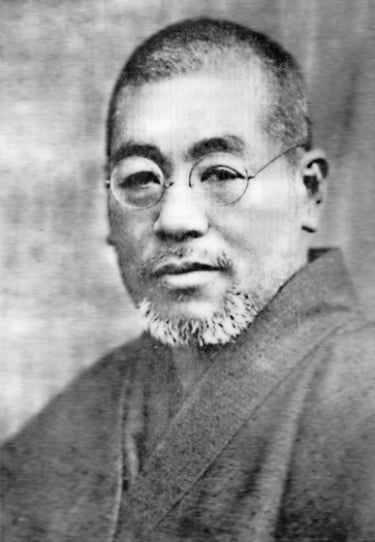Eastern Japanese Reiki, commonly referred to as Traditional Japanese Reiki, has its roots in the spiritual practices of Japan, particularly in the early 20th century. Reiki, as a holistic healing modality, was developed by Mikao Usui, a Japanese Buddhist monk, in the early 1920s. Usui's teachings combined elements of traditional Japanese spirituality, including Buddhism, Shintoism, and Taoism, with his own insights and experiences.
Here's a brief overview of the history of Eastern Japanese Reiki:
Mikao Usui (1865-1926):
Mikao Usui is credited as the founder of Reiki. He developed the system of Reiki after a spiritual quest that led him to Mt. Kurama in Japan, where he underwent a profound spiritual experience during a 21-day meditation retreat. It was during this retreat that he received the Reiki symbols and the ability to channel healing energy.
Usui began teaching Reiki and founded the Usui Reiki Ryoho Gakkai, an organization dedicated to the practice and teaching of Reiki. The early teachings of Usui focused on spiritual development and self-healing.
Chujiro Hayashi (1880-1940):
Hayashi was one of Usui's students and became one of the prominent teachers of Reiki. He developed a more structured approach to teaching Reiki and established the Hayashi Reiki Kenkyukai, a clinic where he treated patients using Reiki.
Hayashi further systematized Usui's teachings and introduced hand positions for treating specific ailments. His approach laid the foundation for what later became known as Western Reiki.
Hawayo Takata (1900-1980):
Takata was a Japanese-American woman who learned Reiki from Hayashi in Japan. She brought Reiki to the West after World War II, introducing it to Hawaii and eventually to the mainland United States.
Takata adapted some aspects of Reiki to make it more accessible and understandable to Western audiences. She introduced a standardized system of hand positions and initiated the practice of charging fees for Reiki sessions, which was not common in Japan.
Traditional Japanese Reiki Revival:
In the late 20th and early 21st centuries, there has been a resurgence of interest in the original teachings of Mikao Usui and the early lineage of Reiki.
Various Reiki practitioners and teachers in Japan and around the world have sought to uncover and preserve the traditional Japanese practices of Reiki. This has led to the establishment of organizations and schools dedicated to teaching Traditional Japanese Reiki.
Traditional Japanese Reiki emphasizes spiritual development, intuition, and the original healing techniques taught by Usui and Hayashi. It often differs from the more standardized and structured approach of Western Reiki.
Today, there are various lineages and interpretations of Reiki, including both Western and Eastern approaches. Eastern Japanese Reiki continues to be practiced by those seeking a deeper connection to the spiritual roots of Reiki and a more holistic approach to healing.
James Greenaway offers the traditional Eastern Japanese Reiki


History of Reiki
Mikao Usui (1865-1926):
Copyright © 2024 James Greenaway Therapies - All Rights Reserved.
CONTACT JAMES
